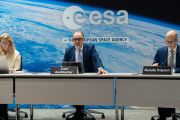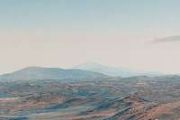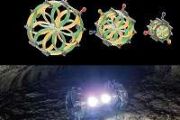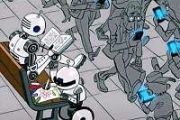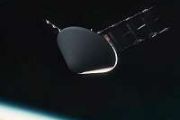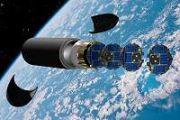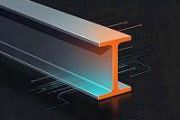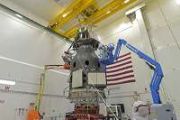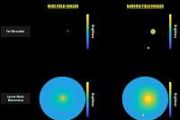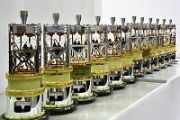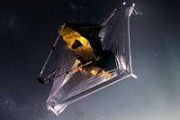
Copernical Team
Orange Africa and Eutelsat Partner to Expand Satellite Internet in Africa and the Middle East
 Orange Africa and Middle East (OMEA) and Eutelsat (Paris:ETL) (LSE:ETL) have entered into a strategic alliance to enhance digital connectivity through satellite broadband services across Africa and the Middle East. This initiative is designed to connect remote regions, fostering greater digital inclusion.
Under this multi-year agreement, Orange will leverage the EUTELSAT KONNECT satellite
Orange Africa and Middle East (OMEA) and Eutelsat (Paris:ETL) (LSE:ETL) have entered into a strategic alliance to enhance digital connectivity through satellite broadband services across Africa and the Middle East. This initiative is designed to connect remote regions, fostering greater digital inclusion.
Under this multi-year agreement, Orange will leverage the EUTELSAT KONNECT satellite Helium Found in Earth's Core Suggests New Insights into Planetary Formation
 A groundbreaking study from researchers in Japan and Taiwan has revealed that helium, an element typically considered chemically inert, can bond with iron under extreme pressures. Using a laser-heated diamond anvil cell, scientists observed this phenomenon, suggesting that substantial amounts of helium may exist in Earth's core. This discovery could challenge long-standing theories about the pla
A groundbreaking study from researchers in Japan and Taiwan has revealed that helium, an element typically considered chemically inert, can bond with iron under extreme pressures. Using a laser-heated diamond anvil cell, scientists observed this phenomenon, suggesting that substantial amounts of helium may exist in Earth's core. This discovery could challenge long-standing theories about the pla Heat from the Sun Linked to Seismic Activity on Earth
Fleet Space Expands Exploration Capabilities with Acquisition of HiSeis
 Fleet Space Technologies, a leader in space-enabled mineral exploration, has announced the acquisition of HiSeis, a premier provider of active seismic exploration technology for the minerals sector.
This strategic move strengthens Fleet Space's ability to deliver comprehensive exploration solutions, integrating cutting-edge seismic data acquisition and AI-driven drill targeting through its
Fleet Space Technologies, a leader in space-enabled mineral exploration, has announced the acquisition of HiSeis, a premier provider of active seismic exploration technology for the minerals sector.
This strategic move strengthens Fleet Space's ability to deliver comprehensive exploration solutions, integrating cutting-edge seismic data acquisition and AI-driven drill targeting through its Tree planting remains the most effective carbon removal strategy despite climate and economic uncertainties
 A new study highlights that tree planting continues to be the most cost-efficient method for carbon removal, provided careful planning is undertaken regarding tree species and planting locations.
Governments globally are committed to increasing forest cover to absorb greenhouse gases, with the UK aiming to plant 30,000 hectares of trees annually until 2050. However, environmental economist
A new study highlights that tree planting continues to be the most cost-efficient method for carbon removal, provided careful planning is undertaken regarding tree species and planting locations.
Governments globally are committed to increasing forest cover to absorb greenhouse gases, with the UK aiming to plant 30,000 hectares of trees annually until 2050. However, environmental economist Study reveals how rising temperatures could lead to population crashes
 Researchers at Rice University have uncovered a critical link between rising temperatures and declines in a species' population, shedding new light on how global warming threatens natural ecosystems. The study, published in Ecology and led by Volker Rudolf, revealed that rising temperatures exacerbate competition within populations, ultimately leading to population crashes at higher temperatures
Researchers at Rice University have uncovered a critical link between rising temperatures and declines in a species' population, shedding new light on how global warming threatens natural ecosystems. The study, published in Ecology and led by Volker Rudolf, revealed that rising temperatures exacerbate competition within populations, ultimately leading to population crashes at higher temperatures SpaceX, NASA launch two missions to 'collect data' on galaxies, sun
 NASA and SpaceX successfully launched their SPHEREx and PUNCH missions into orbit Tuesday night from Vandenberg Space Force Base in California, 24 hours after poor weather and a technical issue scrubbed both missions.
NASA's new space telescope, the SPHEREx observatory, will map the sky on a two-year course over Earth's poles, while four small satellites in the PUNCH mission will study
NASA and SpaceX successfully launched their SPHEREx and PUNCH missions into orbit Tuesday night from Vandenberg Space Force Base in California, 24 hours after poor weather and a technical issue scrubbed both missions.
NASA's new space telescope, the SPHEREx observatory, will map the sky on a two-year course over Earth's poles, while four small satellites in the PUNCH mission will study 'Stranded' astronauts closer to coming home after next ISS launch
 A routine crew rotation at the International Space Station has taken on unusual significance: It paves the way for a pair of astronauts stranded for more than nine months to finally come home.
The NASA-SpaceX Crew-10 mission is set to launch from the Kennedy Space Center in Florida at 7:48 PM (2348 GMT) on Wednesday. The SpaceX Falcon 9 rocket carries a Crew Dragon capsule with a four-member
A routine crew rotation at the International Space Station has taken on unusual significance: It paves the way for a pair of astronauts stranded for more than nine months to finally come home.
The NASA-SpaceX Crew-10 mission is set to launch from the Kennedy Space Center in Florida at 7:48 PM (2348 GMT) on Wednesday. The SpaceX Falcon 9 rocket carries a Crew Dragon capsule with a four-member NASA fires chief scientist, more Trump cuts to come
 NASA announced Tuesday the dismissal of its chief scientist and others to comply with orders from President Donald Trump, marking the latest in a series of administration actions undermining climate change research.
While the move affects only 23 people, a spokeswoman indicated more cuts are coming.
The first round notably eliminates the Office of the Chief Scientist, led by Katherine Ca
NASA announced Tuesday the dismissal of its chief scientist and others to comply with orders from President Donald Trump, marking the latest in a series of administration actions undermining climate change research.
While the move affects only 23 people, a spokeswoman indicated more cuts are coming.
The first round notably eliminates the Office of the Chief Scientist, led by Katherine Ca Sped-up simulation of Hera’s Mars flyby
 Video:
00:02:43
Video:
00:02:43
On 12 March 2025 ESA’s Hera spacecraft for planetary defence performs a flyby of Mars. The gravity of the red planet shifts the spacecraft’s trajectory towards the Didymos binary asteroid system, shortening its trip by months and saving substantial fuel.
This is a simulation of that flyby, with closest approach to Martian moon Deimos taking place at 12:07 GMT and Mars occurring at 12:51 GMT. It was made using SPICE (Spacecraft, Planet, Instrument, C-matrix, Events) software. Produced by a team at ESA’s ESAC European Space Astronomy Centre, this SPICE visualisation is used to plan instrument acquisitions during Hera’s

